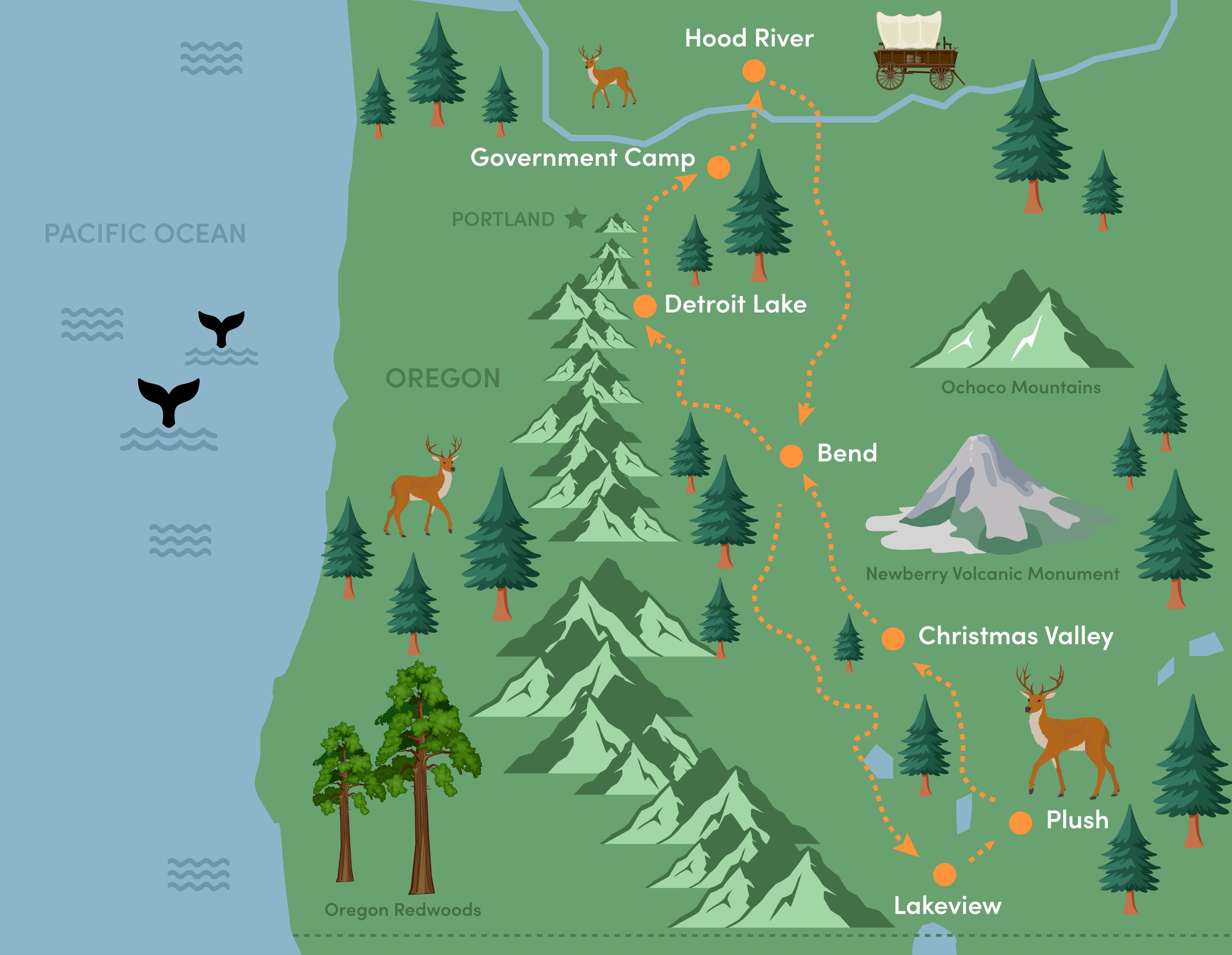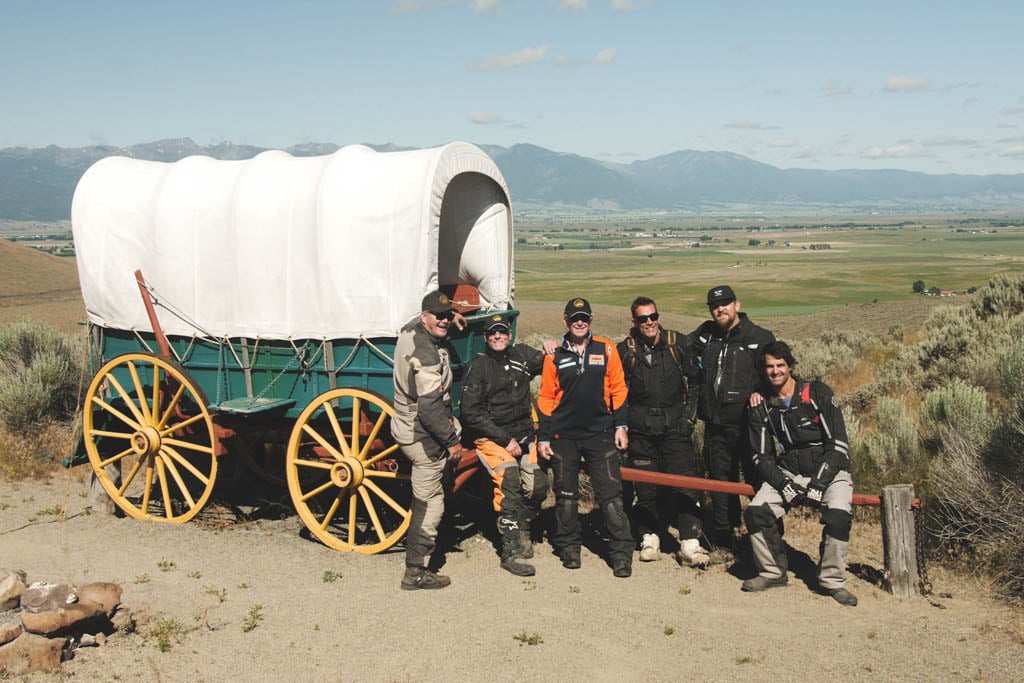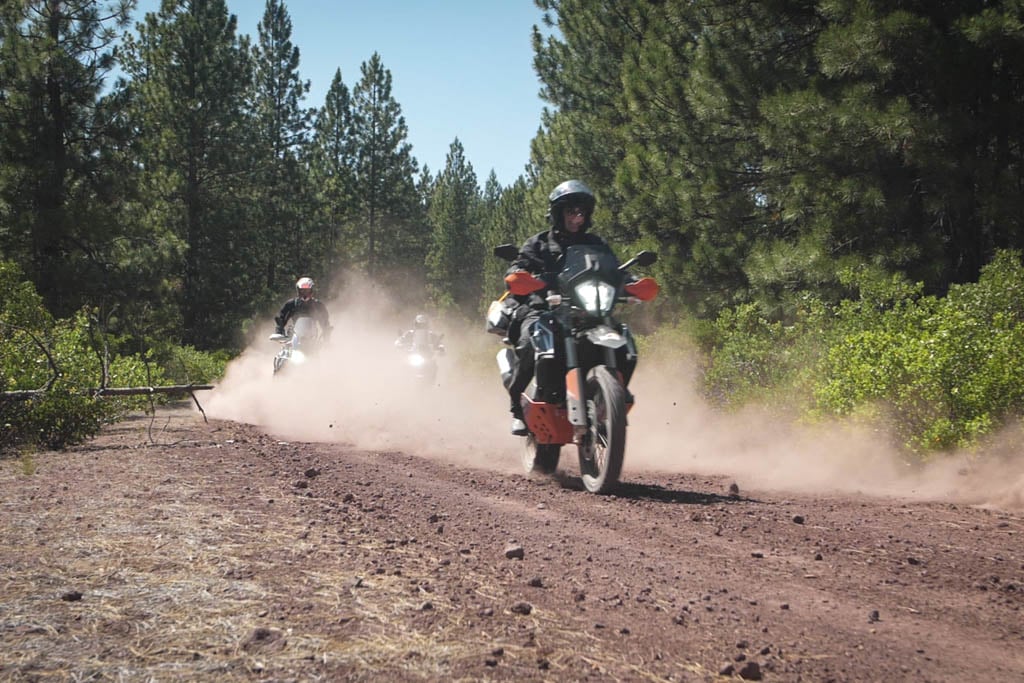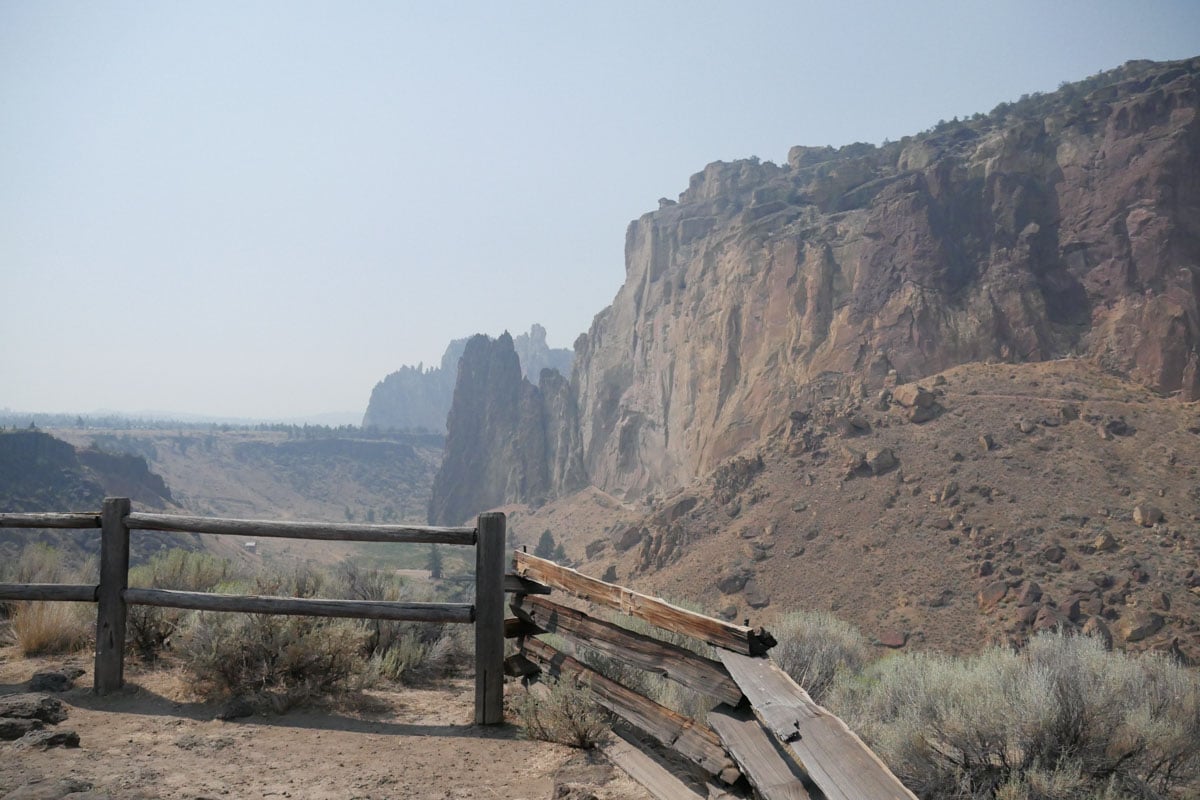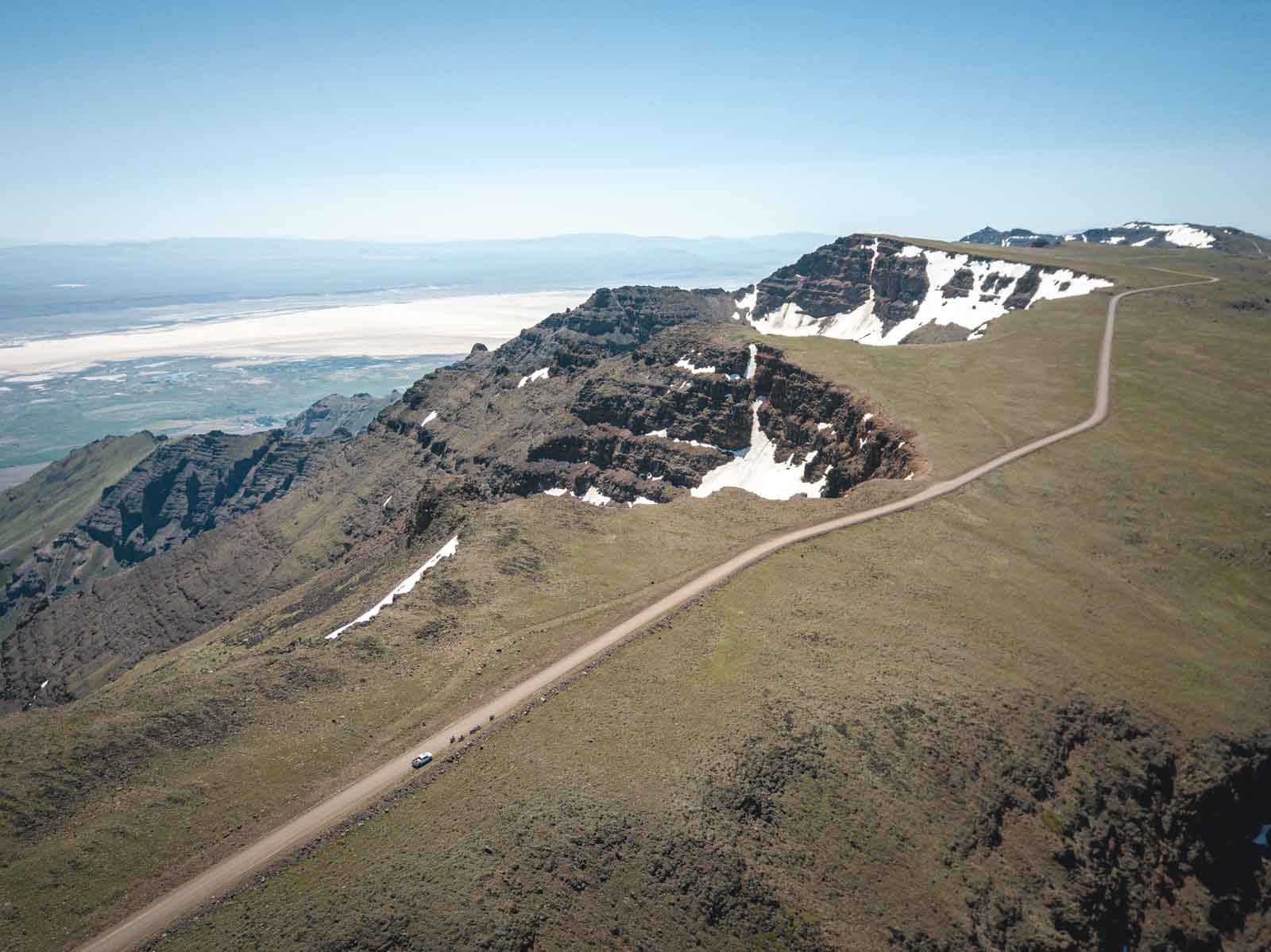Tour Info
Group Ride, Truck-Support
>July 16 - July 25, 2026
- Tour Start: Bend, OR (Recommended Airport: RDM. Portland PDX also an option)
- Tour Finish: Portland, OR (PDX Airport for easy departure)
- Type/Format of Tour: Group Tour with Support Truck (All hotel accommodation included)
- Riding Skills: We have listed this as Level 4 per our Tour Route Difficulty Grading. BDR’s website states, “Roads on the Oregon BDR are more challenging in some places than most other BDRs, especially in extreme dry or wet periods due to the natural road material. You may experience sand and/or rocky surfaces for longer periods than other BDRs, especially in the southern portion of the route. Optional harder sections increase the difficulty with steep, loose, and rocky terrain. These harder sections can be bypassed if so desired. We consider this route intermediate-plus but not the hardest route in the BDR lineup. The harder “expert” sections on the ORBDR are quite difficult so do not attempt them if you are not a very experienced and competent rider.”
- Duration: 10 Days / 9 Nights (7 Full BDR Riding Days). This duration includes a dedicated prep/transfer day and a final transfer day back to Portland.
- Tour Distance & Terrain: Approximately 925 miles (1,530km) of mixed terrain (approximately 70/30 off-road/paved). The core BDR sections are nearly all off-road at 682 miles.
- Group size: Typically 6-10 bikes
Motorcycles available for rent on this trip:
- Kawasaki Versys X-300
- Honda CRF 300LS
- CFMoto 450MT
- Yamaha Tenere 700
- Honda Africa Twin CRF1100
INCLUSIONS IN GROUP PACKAGE
- Motorcycle Rental of your choice (click "Bikes" or "Pricing" on this page to see options)
- 9 Nights Hotel Accommodation (based on double occupancy)
- Support Vehicle with Driver/Mechanic for luggage transport, tools, safety, backup motorcycle, and general assistance.
- General Support Rider familiar with the ORBDR route
- Snacks and cold beverages stocked in support truck
- Welcome and Departure Dinners
- Required 3rd Party Liability Insurance (for rental motorcycles)
- Basic crash protection parts on rental motorcycles
- RIDE Adventures SWAG
NOT INCLUDED
- Flights (Recommended Airports: RDM for Bend and PDX for Portland)
- Visas if necessary per your passport
- National Parks Pass (purchasing prior to trip is suggested)
- Personal Items, gifts, snacks, etc.
- Special activities (rafting, fishing, etc.)
- Airport/Hotel transfers (aside from the final group transfer ride from Hood River to Portland)
- Alcohol
- Fuel
- Meals not mentioned as Included
- Personal, Medical, or Travel Insurance
- Fully Refundable Motorcycle Security Deposit (*Please inquire on specific costs associated with your requested rental or tour package)
NOTE ON MINIMUMS:
- Pricing and inclusions for group tours are based on a 6-Bike minimum for the tour. Trips may run with fewer participants, but alterations in pricing/inclusions may be necessary.
BASE PRICING
Pricing is based on a 6-motorcycle minimum as our group fills-up with like-minded riders from around the world
| Base Tour (Bring Your Own Bike, Shared) |
PRICE |
|---|---|
| BYOB - All Support & Shared Accommodation Included | $4,695 |
RENTAL UPGRADES
Cost for 10-Day Tour (Total Price)
| Honda CRF 300LS | $6,460 |
| CFMoto 450 MT | $6,540 |
| Yamaha Ténéré 700 | $6,620 |
| Honda Africa Twin CRF1100 | $6,700 |
ADDITIONAL OPTIONS
| Single/Private Room Upgrade (9 Nights) |
+$1,539 |
IMPORTANT:
- Please keep in mind, spots on these tours can be sold out 6-8 months in advance! Reservations are only confirmed after receipt of the deposit as indicated in our Terms & Conditions.
Interested in This Tour?
Tour Specs
Level 4
USA
- World-class dual sport adventure riding along the officially **revised** Oregon Backcountry Discovery Route.
- Camaraderie of exploring and riding with a group of fun like-minded riders.
- Enjoy comfortable hotel accommodation every night of the expedition.
- Remote roads, dramatic high-elevation forests, and iconic volcanic landscapes spread across Oregon.
- Winter Rim, Indian Mountain, Crack in the Ground, Green Mountain Lookout, The LUGE, Paulina Crater, Three Creeks Lake, Cache Mountain, Olallie Lake, Timothy Lake, and Surveyors Ridge.
- Wildlife sightings opportunities including Bald Eagles, Black and Brown Bears, Elk, Bobcats, Antelope, Pronghorn, Deer, and others are possible.
ORBDR - The Only REAL Way to Experience Oregon
If you're ready to experience the most reliable and remote dual-sport route in the Pacific Northwest, you've come to the right place. Join RIDE Adventures for our premium Truck-Supported ORBDR Expedition, following the official, newly updated route through Oregon's stunning and rugged landscapes.
We handle the logistics, luggage, and support—you focus on conquering the trail.
Important Note: The BDR organization has revised the southern sections (1-3) of the ORBDR to travel through higher-elevation National Forests. This change ensures cooler temperatures, more consistent conditions, and a longer, safer riding season (mid-June through mid-October). Our tour follows this improved, official route.
Watch the full-length ORBDR Documentary Film and visit the Backcountry Discovery Route website for more details about the route.
Not quite ready to tackle the ORBDR?
Sign up for one of our Training Expeditions to build your off-road adventure skills and confidence.
Itinerary
DAY 1 – Arrival Day in Bend, OR
Arrive at the airport of your choice: Redmond (RDM) is the closest, but Portland (PDX) is a major alternative (and the departure airport). Drive time from PDX to Bend is a tad over 3 hours. This day is reserved for travel, check-in, and relaxation ahead of the expedition briefing.
DAY 2 – Bike Prep & Scenic Transfer to Lakeview, OR
Today is dedicated to preparation and the scenic transfer drive. We will conduct bike handoffs (for rentals) and finalize gear. Following the briefing, we load up and follow a scenic, all-pavement route south to Lakeview, the jumping-off point for the BDR.
Optional Detour: Riders may choose to take a stunning side trip to Crater Lake National Park. This detour adds approximately 2 hours of riding time (a total of 5 hours) but offers unforgettable views before we rendezvous in Lakeview for our hotel stay.
DAY 3 – ORBDR Section 1: New Pine Creek to Paisley (128 miles - mostly off-pavement)
The adventure officially begins! We start at the new official BDR terminus near New Pine Creek, CA, with a steep ascent into the Warner Mountains on beautiful forested dirt roads. After fueling in Lakeview, we follow gravel and two-track through Fremont National Forest. Keep an eye out for the stunning ridgeline views as we descend into the town of Paisley, where we check into our hotel.
DAY 4 – ORBDR Section 2: Paisley to Chemult (136 miles - mostly off-pavement)
Leaving Paisley, we immediately ascend the Winter Rim, offering fantastic views of Summer Lake and the surrounding high plateau on smooth, twisty gravel roads. We tackle the official ORBDR track, including optional harder sections along moderately rocky two-tracks. We take a short detour up to Indian Mountain for a panoramic 360-degree view before heading east through the remote Wimena National Forest. The day finishes in Chemult, where we regroup at our hotel.
DAY 5 – ORBDR Section 3: Chemult to Sunriver (98 miles - mixed terrain)
Today is focused on unique volcanic features. We visit the fissure known as Crack in the Ground and Green Mountain Lookout. The route enters Deschutes National Forest and features the fun "The LUGE, " a tight, twisting forest road section. The main track eventually crosses Highway 97 near Sunriver for the night's hotel stay.
DAY 6 – ORBDR Section 4: Sunriver to Sisters (68 miles - mixed terrain)
After gassing up in Sunriver, the ORBDR hopscotches between dirt and tarmac, with steady climbs into the Cascade Range. We enjoy flowy roads and an optional side trip to Three Creek Lake. We descend before riding pavement into the vibrant, western-themed town of Sisters, where we settle into our accommodation beneath the Three Sisters volcanoes.
DAY 7 – ORBDR Section 5: Sisters to Detroit (76 miles - mostly off-pavement)
The track journeys back onto roads within Deschutes National Forest. The section features the whoops-filled Old Santiam Wagon Road and loops around. After following typical forest roads, we descend to the east shore of Detroit Lake, where we stay the night in a hotel, supporting the town's ongoing recovery.
DAY 8 – ORBDR Section 6: Detroit to Government Camp (92.5 miles - mostly off-pavement)
North of Detroit, we ascend the Breitenbush River Valley, navigating areas impacted by recent wildfires. The route meanders toward Olallie Lake and passes by Timothy Lake and Clear Lake before finishing the day on pavement into Government Camp, located near the base of Mount Hood, and checking into our hotel.
DAY 9 – ORBDR Section 7: Government Camp to Hood River (83.2 miles - mostly off-pavement) & Transfer to Portland
The final BDR section! We ride through Mount Hood National Forest, hitting high-elevation roads on Gunsight Butte and Surveyors Ridge for spectacular panoramic views. We finish the official route at Port Marina Park in Hood River.
Congratulations!
We'll make our way into Portland for the final stretch and get to our hotel.
DAY 10 – Departure Day
Thank you for riding with us. We hope you enjoyed Oregon.
Minimum Essential Gear for RIDE Training
If you're planning to jump on a guided tour or training with RIDE Adventures, it's essential that you have the right gear. This helps to ensure your safety and the safety of others while on the road.
Not being properly prepared can lead to injuires that could have been avoided. Our guides have created a Minimum Essential Gear Guide if you plan to book a RIDE Adventures. If you don't come minimally prepared there is a chance our guides will prevent you from hopping on a bike. Make sure you're prepared for the adventure.
Bikes Available
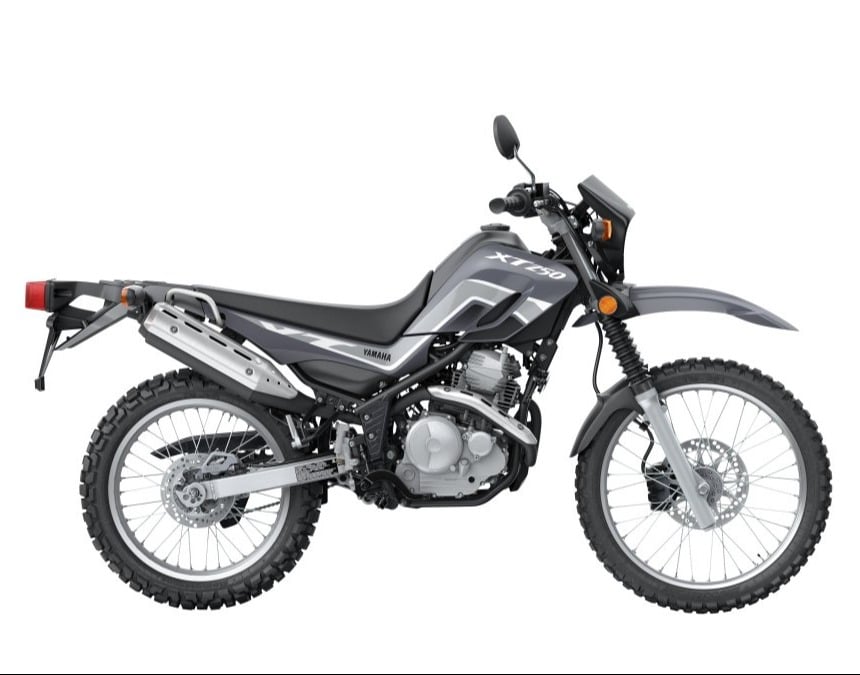
2024 Yamaha XT250
The Yamaha XT250 is a reliable and versatile dual-sport bike, perfect for both on- and off-road adventures.
Its air-cooled 249cc single-cylinder engine provides a broad powerband and excellent fuel efficiency, while the compact chassis and long-travel suspension ensure agile handling and comfort on various terrain.
With features like a 21-inch front wheel, wide-ratio five-speed transmission, and electric start, the XT250 is ideal for exploring dirt trails, commuting, or simply enjoying the thrill of the ride.
X
32.7 in
291 lbs
2.5 gal
249cc
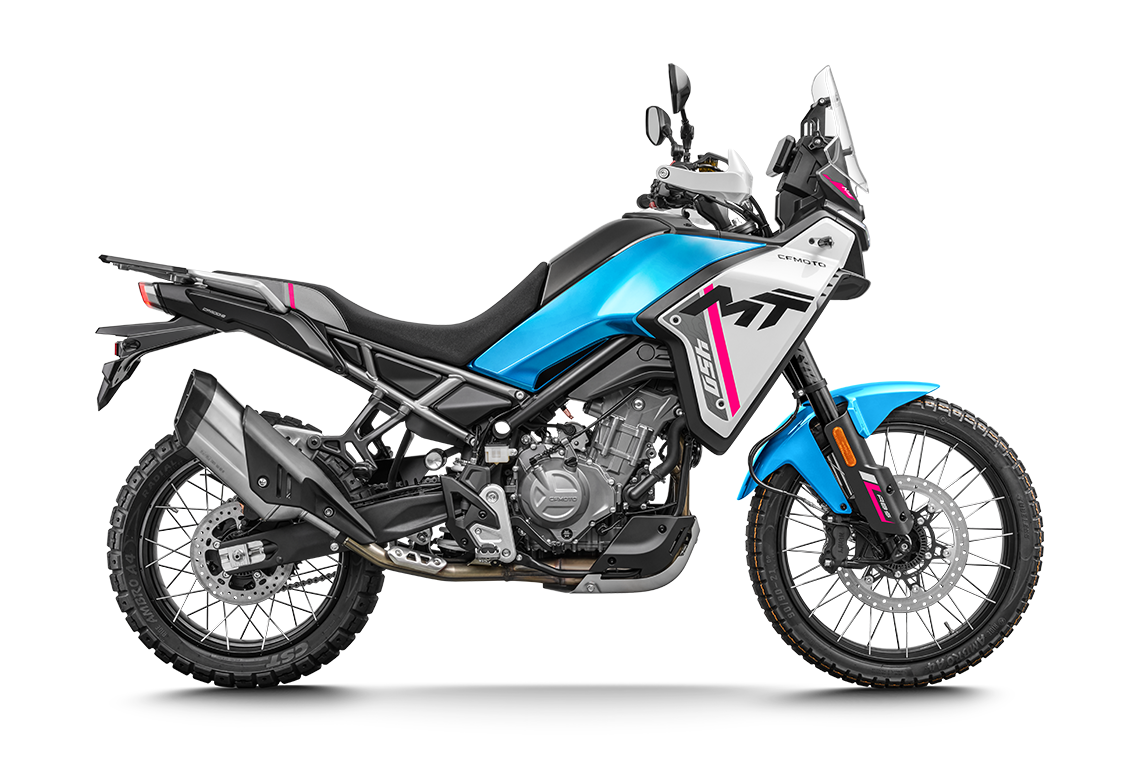
CFMOTO 450MT
The CFMOTO 450MT is built extra tough to take you beyond where the road ends. This adventure bike brings multi-terrain capability and versatility to CFMOTO's adventure touring category. Now lighter in weight, it boasts responsive power and torque from its acclaimed engine, making it perfect for the adventurous rider.
Smartly equipped for dirt, the 450MT is designed to handle a variety of terrains with ease. Whether you're exploring rugged trails or enjoying long-distance touring, the 450MT is perfectly crafted to meet the needs of those who seek adventure.
X
31.4 in/32.2 in | 800 mm/820 mm
386 lbs | 175 kg
4.6 gal | 17.6 liter
449.5 cc
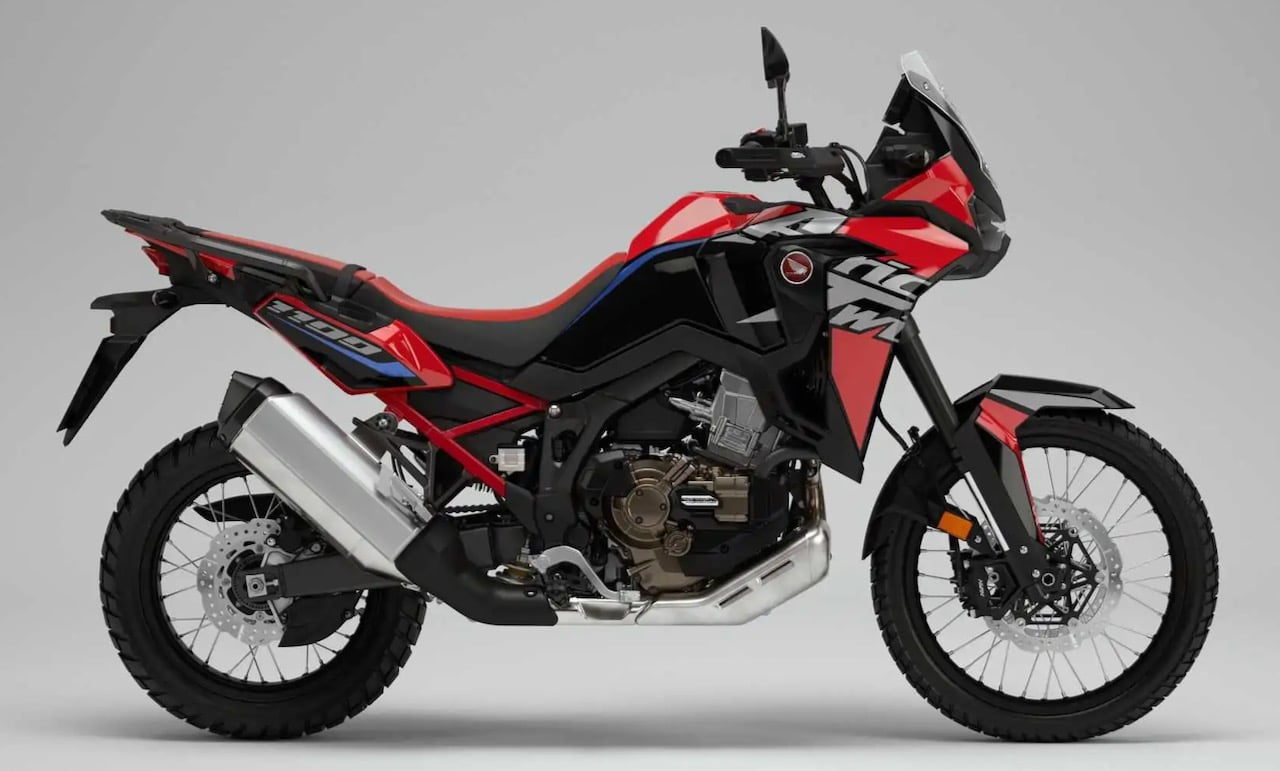
Honda Africa Twin CRF1100
X
33.5/34.3 in
505 lb
5.0 gal
1084 cc
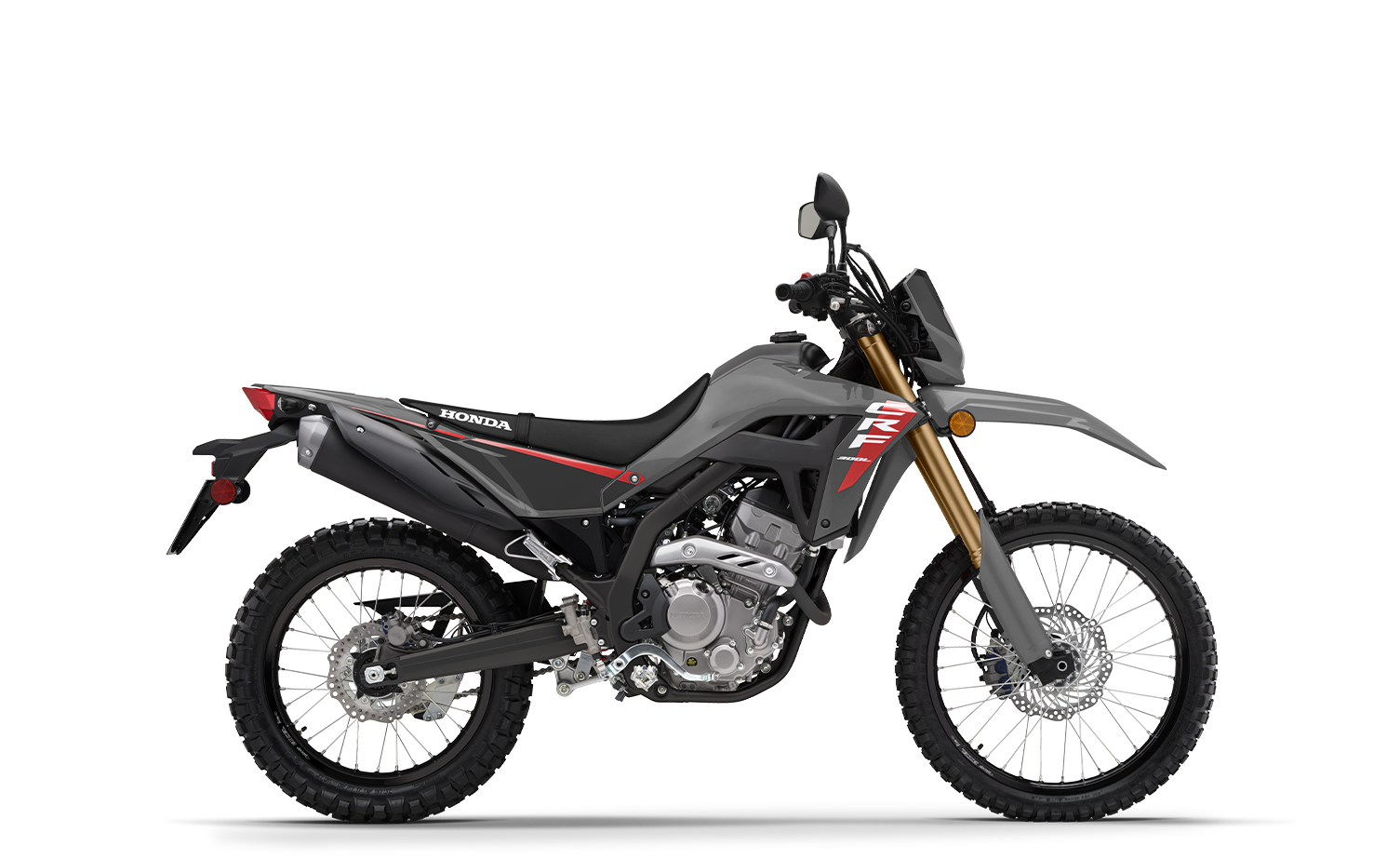
Honda CRF300LS (Low Seat)
The Honda CRF300L is a benchmark in the lightweight dual-sport category, offering a highly reliable and accessible platform for off-road-focused adventure travel.
This motorcycle is engineered for riders who prioritize maneuverability and simplicity over raw power, providing confidence on demanding trails where larger adventure bikes often struggle. The platform successfully blends long-travel suspension and robust construction with commuter-friendly ergonomics and excellent fuel economy.
Powered by a smooth 286cc liquid-cooled single-cylinder engine, the CRF300L delivers predictable, tractable power necessary for technical terrain and provides reliable performance for long-distance touring and multi-day BDR-style expeditions. Its design makes maintenance straightforward, reinforcing its reputation for legendary Honda durability and making it a strategic choice for self-supported travel.
X
32.7 in | 830.5 mm
311 lbs | 141 kg
2.1 gal | 7.9 liter
286 cc
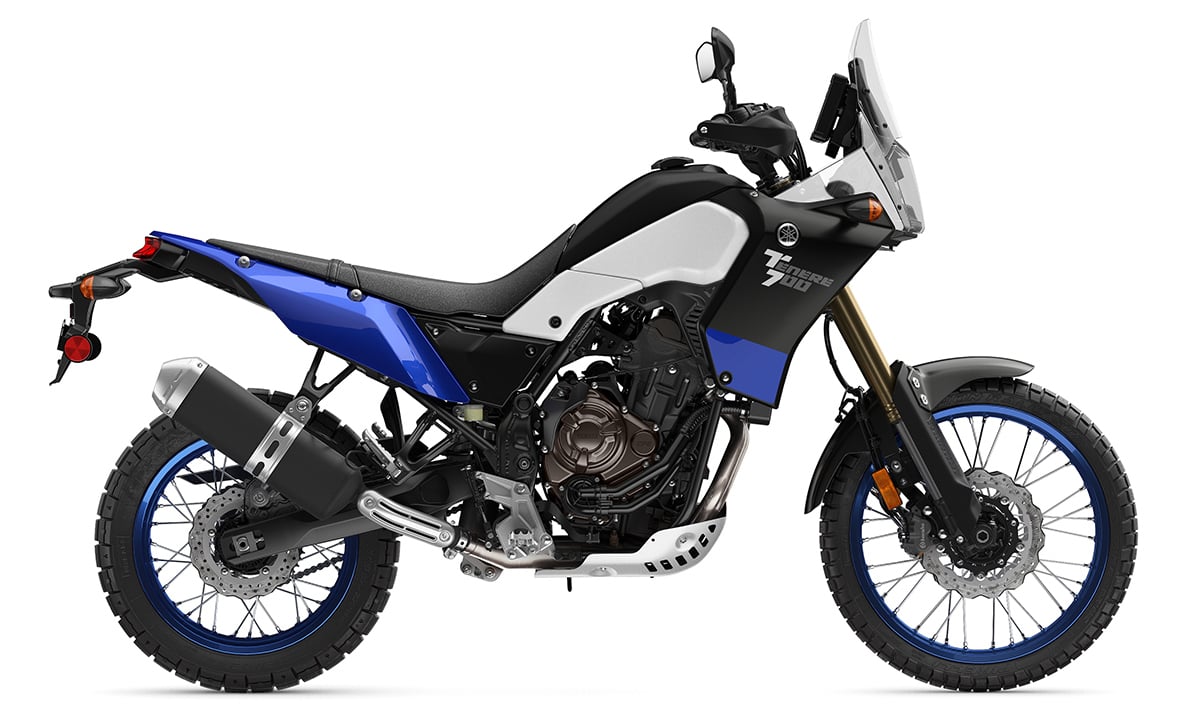
Yamaha Ténéré 700
This highly-anticipated "masterpiece of value" has finally been released, giving dual sport adventure riders around the world one more incredible middle-weight adventure bike to choose from. With 73+ smooth, linear horsepower pouring through one of most beautiful exhaust notes out there, the Ténéré 700's unique anti-squat design puts that power into the ground, instead of into the rear shock. The result is one of the best handling, adventure bikes on the market, all backed by typical Yamaha-reliability. Take this agile machine on short trips or long, paved twisties or dirt roads, and know that this may be as close to the "perfect" adventure bike as we have seen in a while. With an attractive entry price, and corresponding rental rate, we expect the number of Ténéré 700's in our fleet operations to grow steadily and remain a factor for a long time.
X
34.4 in / 874mm
452 lb / 205kg
4.2 gal
689 cc

